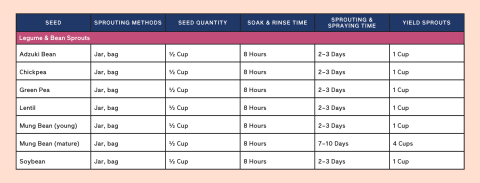Eating legumes may help with many health issues, including reducing cholesterol levels1 and hypertension and complications with diabetes2, fibrocystic breast disease, and prostate cancer3. Because they are so proteinaceous and hearty, they can help moderate blood sugar levels4, not just at the meal but for hours afterward. And when you consume your legumes sprouted, the benefits can increase5 by leaps and bounds! Here are a few favorite sprouts to highlight: You can add chickpea sprouts to a salad, toss them with chutneys to make the Indian street food chaat, or snack on them out of hand. You can even make hummus with them. If everyone knew how delicious and nutritious sprouted hummus can be, we might start to see a shortage of raw chickpeas! Sprouted lentils have twice the antioxidant content6 as unsprouted. Lentils contain the anti-nutrient phytic acid, but when they are sprouted, the phytic acid gets neutralized and more vitamins and minerals get absorbed. Another fascinating aspect of sprouting lentils is what happens to the vitamin C7. It literally increases over 400% from 5% to 21% of the RDA. Mung beans are a powerhouse of vitamins and minerals. We all need vitamin C, so you’ll be happy to learn that the vitamin C content in mung beans8 goes from 1% to 23% when sprouted. Mung bean sprouts also contain hearty amounts of iron, folate, fiber, and manganese9. A single cup has 43% of the RDI of vitamin K, which regulates bone mineralization and bone density10. There are two common types of mung bean sprouts: the mature ones that look like a 2-inch white worm and the ones that look like the original mung bean with a little tail. They have similar nutrition and can come from the same seed. The difference is in how long they take to grow and how they taste. The 2-inch sprouts are watery and crisp, and the smaller sprouts are more like a crunchy nut, similar to other legume sprouts. They have a clean, nutty flavor that pairs well with fruits and vegetables. Because they have a high liquid content, you can use them in place of water in blending smoothies, raw soups, and dips. Wondering how to sprout your legumes and beans? Here’s a simple chart to help you get started:



